March is a month dedicated to celebrating the achievements and contributions of women. In ancient Egypt, there were remarkable women who challenged gender roles and made significant contributions to politics, religion, and warfare.
One of the most successful female pharaohs in Egyptian history was Hatshepsut, who ruled as pharaoh during the 18th dynasty. During her reign, she focused on expanding trade and building monumental structures, including her famous mortuary temple at Deir el-Bahari, located on the west bank of the Nile near Luxor.
Hatshepsut was born into a royal family, and her father, Thutmose I, was a pharaoh. Upon his death, her half-brother Thutmose II ascended the throne and married Hatshepsut. However, Thutmose II had a short reign, and when he died, his son Thutmose III was too young to rule. Hatshepsut, as the queen regent, stepped in to assume the responsibilities of the pharaoh.
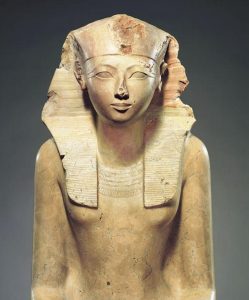
Rather than merely acting as a regent until her stepson came of age, Hatshepsut took the unprecedented step of declaring herself pharaoh. She adopted the traditional regalia and symbols of pharaonic power, including the false beard and the kilt, and presented herself as a male ruler.
Despite her achievements, after her death, Hatshepsut’s legacy was largely erased by subsequent rulers. Many of her statues were defaced, and her name was removed from official records. It wasn’t until the 19th century that excavations and decipherment of hieroglyphics brought her story back into the limelight, according to a study by renowned archaeologist Mostafa Waziry.
Merneith was an influential figure in ancient Egypt during the First Dynasty. She is believed to have ruled as a regent and later as a pharaoh, making her one of the earliest known female rulers in history.
Merneith’s reign was marked by stability and prosperity, as evidenced by the numerous artefacts and inscriptions found from this period. Her tomb, discovered in 1900 by renowned archaeologist Flinders Petrie, contained a wealth of grave goods, indicating her high status and significance in Egyptian society.
During her reign, Merneith oversaw various religious and administrative activities. She was associated with the goddess Neith, which is reflected in her royal name. Merneith is also credited with constructing important funerary structures, including the famous Mastaba-tombs in the northern part of Abydos.
Tiye was an influential queen of ancient Egypt who lived during the 14th century BC. She was the Great Royal Wife of Amenhotep III, one of the most powerful pharaohs of the New Kingdom period. Tiye was known for her strong personality, intelligence, and her significant role in the political and religious affairs of Egypt.
One of Tiye’s most significant contributions to Egypt was her involvement in religious reforms during the reign of Amenhotep III. She played a prominent role in the worship of the sun-disk deity Aten, and it is believed that she influenced the pharaoh’s decision to elevate Aten to the position of the supreme god of Egypt. This paved the way for the religious revolution initiated by their son, Akhenaten, who went on to become one of the most controversial pharaohs in history.
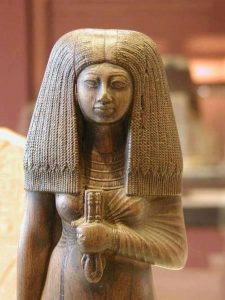 Tiye’s influence extended beyond her husband’s reign. She also played a crucial role in shaping the destiny of her son, Akhenaten. She was actively involved in his upbringing and education, ensuring that he had a strong foundation in religion, politics, and leadership. Tiye’s guidance shaped Akhenaten’s religious beliefs and his decision to abandon the traditional pantheon of gods in favour of Aten.
Tiye’s influence extended beyond her husband’s reign. She also played a crucial role in shaping the destiny of her son, Akhenaten. She was actively involved in his upbringing and education, ensuring that he had a strong foundation in religion, politics, and leadership. Tiye’s guidance shaped Akhenaten’s religious beliefs and his decision to abandon the traditional pantheon of gods in favour of Aten.
Tiye lived a long and prosperous life, witnessing the rise and fall of her son, Akhenaten, and her grandson, Tutankhamun. She died during the reign of Tutankhamun and was buried in a grand tomb in the Valley of the Kings, reflecting her status and significance in Egyptian history.
Merit Ptah is recognised as the first recorded female physician in history. Merit Ptah held the title of Chief Physician and served during the reign of Pharaoh Djoser in the 27th century BC. Her medical knowledge and skills were highly regarded, and she was honoured with an elaborate tomb inscription that praised her abilities.
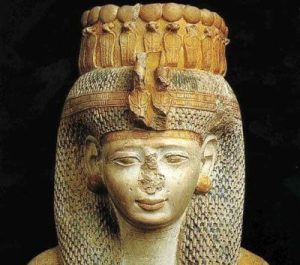 Merit Ptah’s existence is known primarily through an inscription on her tomb in the city of Saqqara. The inscription refers to her as “the Chief Physician” and “the Lady Overseer of the Female Physicians,” indicating that she held a high-ranking position within the medical profession. Her title suggests that she not only practised medicine herself but also supervised other female physicians.
Merit Ptah’s existence is known primarily through an inscription on her tomb in the city of Saqqara. The inscription refers to her as “the Chief Physician” and “the Lady Overseer of the Female Physicians,” indicating that she held a high-ranking position within the medical profession. Her title suggests that she not only practised medicine herself but also supervised other female physicians.
She treated a wide range of ailments and injuries. The ancient Egyptian medical system was holistic, combining magical and religious beliefs with practical knowledge of anatomy and herbal medicine. Physicians like Merit Ptah would have been well-versed in diagnosing and treating various illnesses, as well as performing basic surgical procedures.
Nefertiti, the queen consort of Pharaoh Akhenaten, is renowned for her beauty and influence. Nefertiti played a significant role in the religious revolution initiated by her husband, which shifted Egypt’s religious focus to the worship of Aten, the sun god. She is often depicted in artwork alongside Akhenaten.
Some historians speculate that she may have even shared the role of pharaoh with Akhenaten during a period of co-regency, as there are depictions of her performing pharaonic duties and wearing the royal regalia.
Nefertiti’s iconic image, immortalised in her famous bust discovered in 1912, showcases her exceptional beauty. The bust, now housed in the Neues Museum in Berlin, Germany, has become an enduring symbol of female beauty and is one of the most recognisable works of Egyptian art.
Twosret was a remarkable woman who rose to prominence in ancient Egypt during the 19th dynasty. Her reign marked a significant moment in ancient Egyptian history as she ascended to the throne following the death of her husband, Seti II.
During her reign, Twosret undertook various construction projects, furthering the architectural legacy of ancient Egypt. She commissioned the building of mortuary temples and monuments, emphasising her legitimacy as a ruler. One of her most notable monuments is the Temple of Millions of Years, dedicated to the god Amun, at Medinet Habu.
Ahmose Nefertari was a prominent queen, wife and sister of Pharaoh Ahmose I, the founder of the New Kingdom and the first ruler of the 18th Dynasty. Sheplayed a crucial role in the liberation of Egypt from the Hyksos, a foreign dynasty that had ruled the northern part of the country for over a century. Ahmose I led the military campaign against the Hyksos, and Ahmose Nefertari supported him both politically and symbolically.
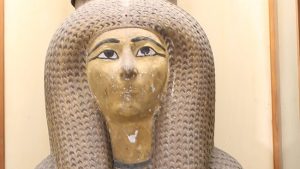
Ahmose Nefertari is believed to have been highly educated and had a keen interest in religion and state affairs. She held the title of “God’s Wife of Amun,” a prestigious position that gave her significant religious authority and influence. As the God’s Wife of Amun, she was seen as a divine consort and played a pivotal role in the temple rituals and ceremonies dedicated to the god Amun.
During her reign, Ahmose Nefertari actively participated in the religious and cultural revival that followed the expulsion of the Hyksos. She oversaw the construction and restoration of numerous temples, including Karnak and Luxor, ensuring the supremacy of the Amun cult and reinforcing the religious authority of the pharaoh.
Ahmose Nefertari was also renowned for her support of the arts and literature. She encouraged the production of works that celebrated the military achievements of her husband and the restoration of Egyptian independence. The famous Hymn to the Nile, a poetic composition that praised the river and its life-giving properties, is attributed to her.



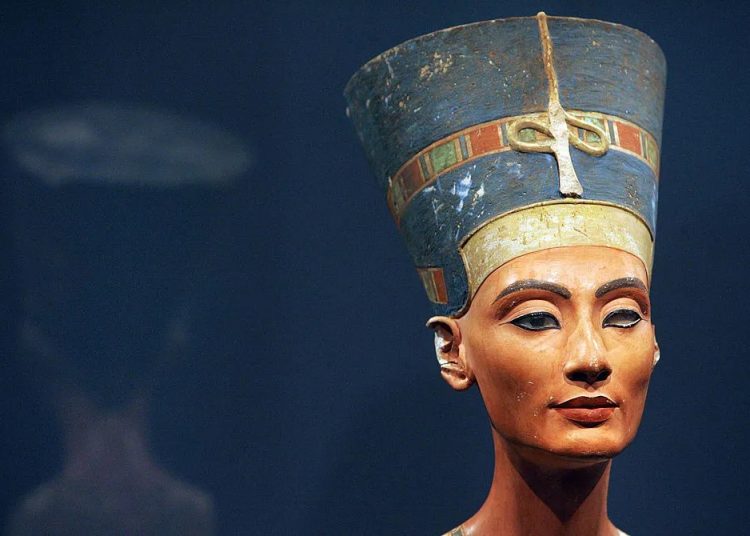


Discussion about this post